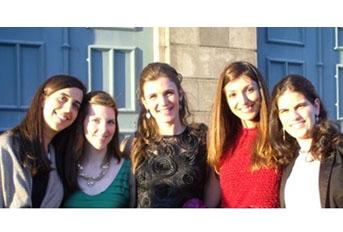Associação Portuguesa de Investigação em Cancro
Matrix metalloproteases as maestros for the dual role of LPS- and IL-10-stimulated macrophages in cancer cell behaviour
Matrix metalloproteases as maestros for the dual role of LPS- and IL-10-stimulated macrophages in cancer cell behaviour

Authors and Affiliations:
Ana P. Cardoso1,2,3, Marta L. Pinto1,2,4, Ana T. Pinto1,2,3, Marta T. Pinto1,4, Cátia Monteiro1,2, Marta I. Oliveira1,2, Susana G. Santos1,2,3, João B. Relvas1,5, Raquel Seruca1,6,7, Alberto Mantovani8,9, Marc Mareel10, Mário A. Barbosa1,2,4 and Maria J. Oliveira1,2,7
1I3S - Instituto de Investigação e Inovação em Saúde, Universidade do Porto, Porto, Portugal
2INEB-Institute of Biomedical Engineering, University of Porto;
3FEUP-Faculty of Engineering, University of Porto;
4ICBAS-Institute of Biomedical Sciences Abel Salazar, University of Porto;
5IBMC-Institute for Cell and Molecular Biology, University of Porto;
6IPATIMUP-Institute of Molecular Pathology and Immunology of the University of Porto;
7Department of Pathology and Oncology, Faculty of Medicine, University of Porto;
8Humanitas Clinical and Research Centre, Rozzano, Italy;
9BIOMETRA Department, University of Milan, Milan, Italy
10Laboratory of Experimental Cancerology, Ghent University Hospital, Belgium
Abstract:
The interactions established between macrophages and cancer cells are largely dependent on instructions from the tumour microenvironment. Macrophages may differentiate into populations with distinct inflammatory profiles, but knowledge on their role on cancer cell activities is still very scarce. In this work, we investigated the influence of pro-inflammatory (LPS-stimulated) and anti-inflammatory (IL-10-stimulated) macrophages on gastric and colorectal cancer cell invasion, motility/migration, angiogenesis and proteolysis, and the associated molecular mechanisms.
Following exposure of gastric and colon cancer cell lines to LPS- and IL-10-stimulated human macrophages, either by indirect contact or conditioned media, we analyzed the effect of the different macrophage populations on cancer cell invasion, migration, motility and phosphorylation of EGFR and of several interacting partners. Cancer-cell induced angiogenesis upon the influence of conditioned media from both macrophage populations was assessed using the chick embryo chorioallantoic membrane assay. MMP activities were evaluated by gelatin zymograhy.
Our results show that IL-10-stimulated macrophages are more efficient in promoting in vitro cancer cell invasion and migration. In addition, soluble factors produced by these macrophages enhanced in vivo cancer cell-induced angiogenesis, as opposed to their LPS-stimulated counterparts. We further demonstrate that differences in the ability of these macrophage populations to stimulate invasion or angiogenesis cannot be explained by the EGFR-mediated signalling, since both LPS- and IL-10-stimulated macrophages similarly induce the phosphorylation of cancer cell EGFR, c-Src, Akt, ERK1/2, and p38. Interestingly, both populations exert distinct proteolytic activities, being the IL-10-stimulated macrophages the most efficient in inducing matrix metalloprotease (MMP)-2 and MMP-9 activities. Using a broad-spectrum MMP inhibitor, we demonstrated that proteolysis was essential for macrophage-mediated cancer cell invasion and angiogenesis.
We propose that IL-10- and LPS-stimulated macrophages distinctly modulate gastric and colorectal cancer cell behaviour, as result of distinct proteolytic profiles that impact cell invasion and angiogenesis.
Journal: BMC Cancer
Link: http://www.ncbi.nlm.nih.gov/pubmed/26043921




